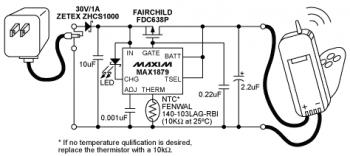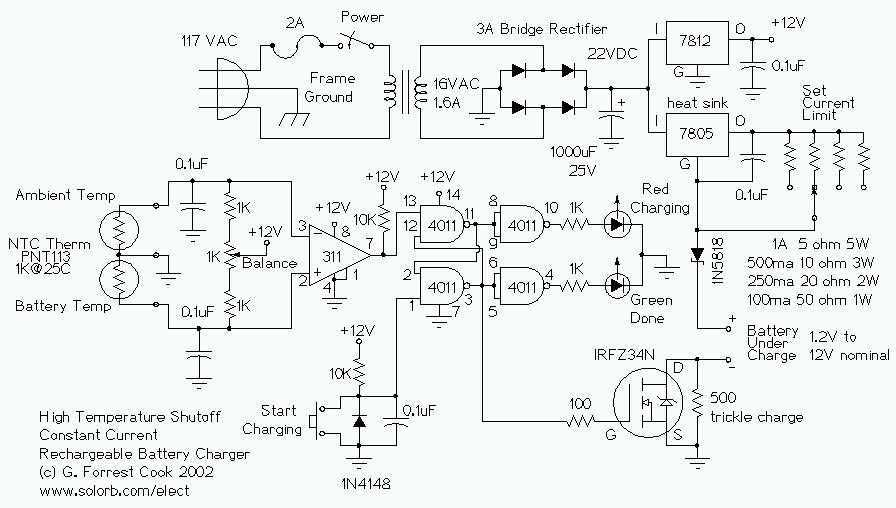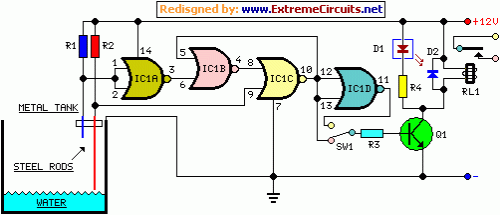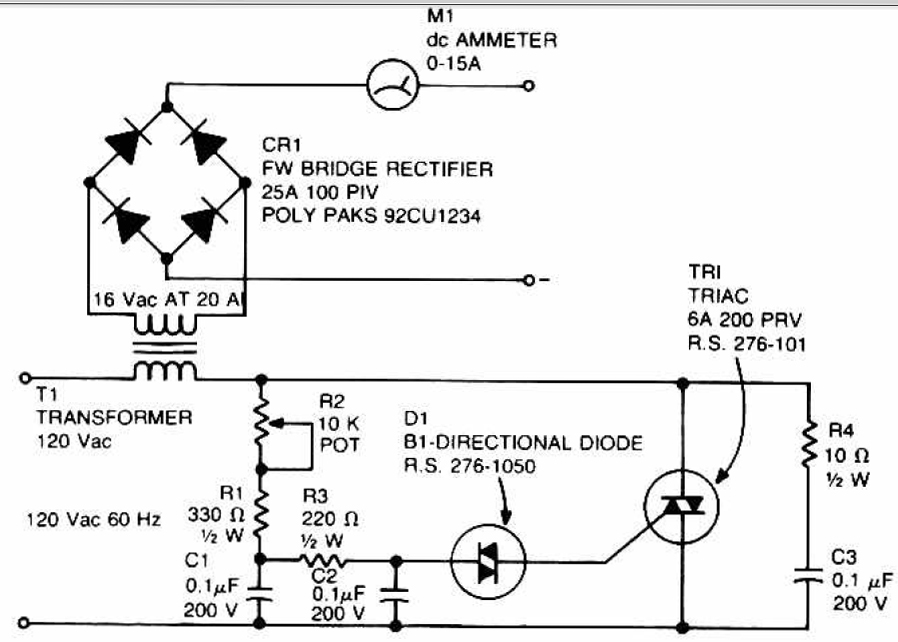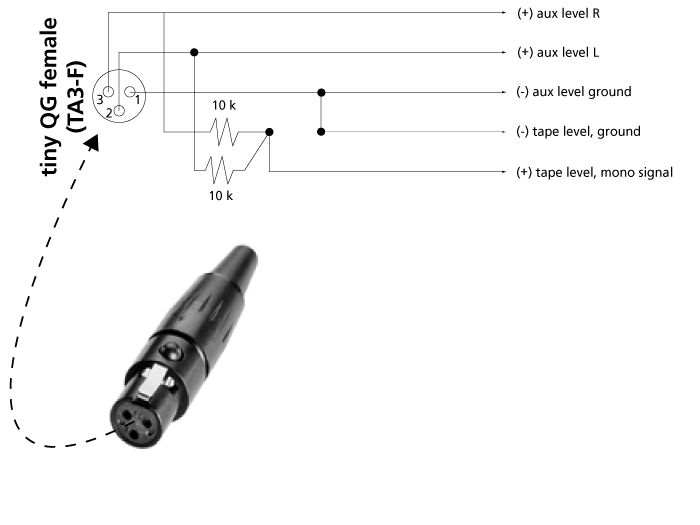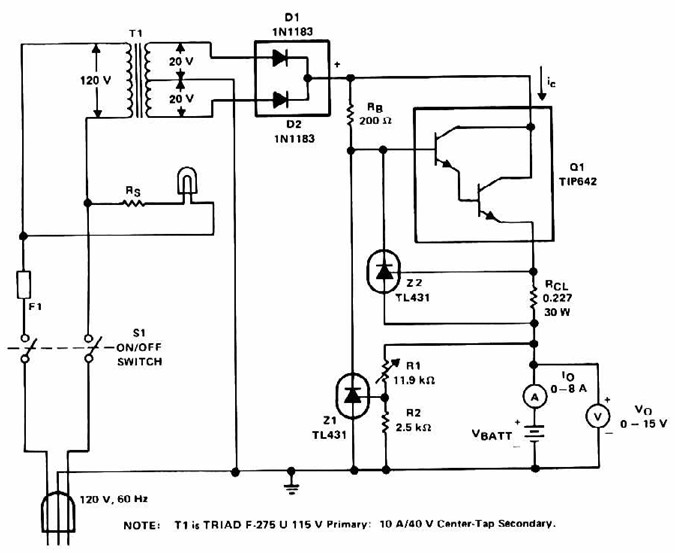
Positive input-negative output charge pump
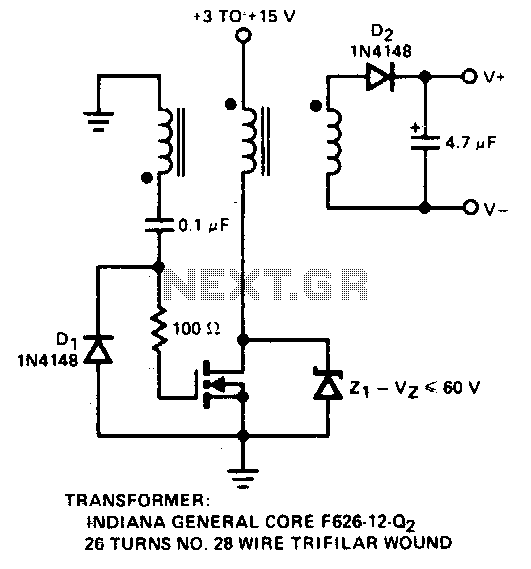
A simple method for generating a low-power voltage supply of opposite polarity from the main supply. A self-oscillating driver produces pulses at a repetition frequency of 100 kHz. When the VMOS device is off, capacitor C is charged to the positive supply. When the VMOS transistor switches on, C delivers a negative voltage through the series diode to the output. The Zener diode functions as a dissipative regulator.
The described circuit utilizes a self-oscillating driver to create a low-power negative voltage supply. This is achieved through the operation of a VMOS transistor, which acts as a switch in the circuit. The oscillation frequency of 100 kHz allows for efficient energy transfer and rapid switching, which is crucial for maintaining the desired output voltage level.
When the VMOS transistor is in the off state, capacitor C is charged to the positive voltage level of the main supply. This charging phase is essential as it stores energy that will later be converted into a negative voltage. Once the VMOS transistor is activated (switched on), the previously charged capacitor C discharges through a series diode, delivering a negative voltage to the output. This mechanism effectively inverts the polarity of the output voltage relative to the main supply.
The inclusion of a Zener diode in the circuit serves a critical role as a dissipative regulator. It helps to stabilize the output voltage by clamping it to a predefined level, ensuring that fluctuations in the load do not adversely affect the output. The Zener diode operates in reverse breakdown mode, allowing it to maintain a constant voltage across its terminals even as the input voltage varies.
Overall, this circuit design is beneficial for applications requiring a low-power negative voltage supply, such as in sensor circuits, operational amplifiers, or other electronic devices where opposite polarity is necessary for proper functionality. The simplicity and efficiency of the design make it an attractive solution for various electronic engineering applications.A simple means of generating a low-power voltage supply of opposite polarity from the main supply. Self oscillating driver produces pulses at a repetition frequency of 100 kHz. When the VMOS device is off, capacitor C is charged to the positive supply. When the VMOS transistor switches on, C delivers a negative voltage through the series diode to the output The zener serves as a dissipative regulator. 🔗 External reference
The described circuit utilizes a self-oscillating driver to create a low-power negative voltage supply. This is achieved through the operation of a VMOS transistor, which acts as a switch in the circuit. The oscillation frequency of 100 kHz allows for efficient energy transfer and rapid switching, which is crucial for maintaining the desired output voltage level.
When the VMOS transistor is in the off state, capacitor C is charged to the positive voltage level of the main supply. This charging phase is essential as it stores energy that will later be converted into a negative voltage. Once the VMOS transistor is activated (switched on), the previously charged capacitor C discharges through a series diode, delivering a negative voltage to the output. This mechanism effectively inverts the polarity of the output voltage relative to the main supply.
The inclusion of a Zener diode in the circuit serves a critical role as a dissipative regulator. It helps to stabilize the output voltage by clamping it to a predefined level, ensuring that fluctuations in the load do not adversely affect the output. The Zener diode operates in reverse breakdown mode, allowing it to maintain a constant voltage across its terminals even as the input voltage varies.
Overall, this circuit design is beneficial for applications requiring a low-power negative voltage supply, such as in sensor circuits, operational amplifiers, or other electronic devices where opposite polarity is necessary for proper functionality. The simplicity and efficiency of the design make it an attractive solution for various electronic engineering applications.A simple means of generating a low-power voltage supply of opposite polarity from the main supply. Self oscillating driver produces pulses at a repetition frequency of 100 kHz. When the VMOS device is off, capacitor C is charged to the positive supply. When the VMOS transistor switches on, C delivers a negative voltage through the series diode to the output The zener serves as a dissipative regulator. 🔗 External reference
